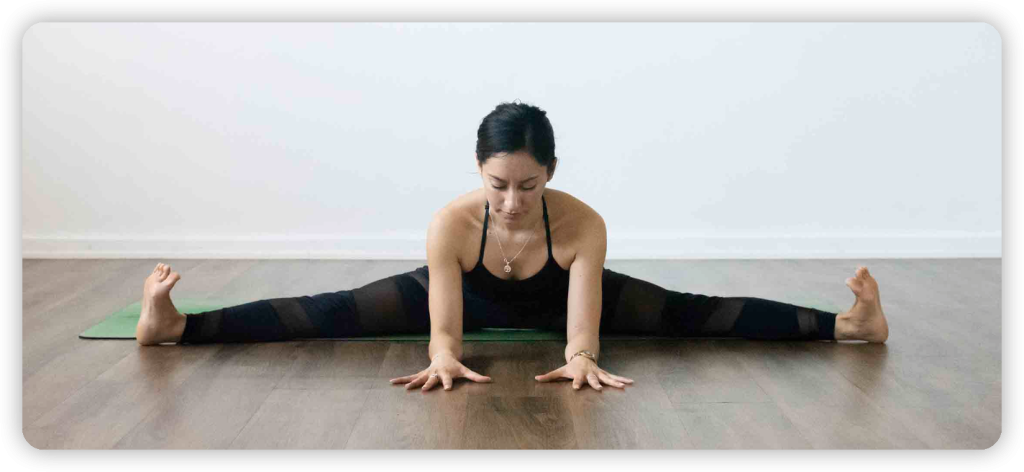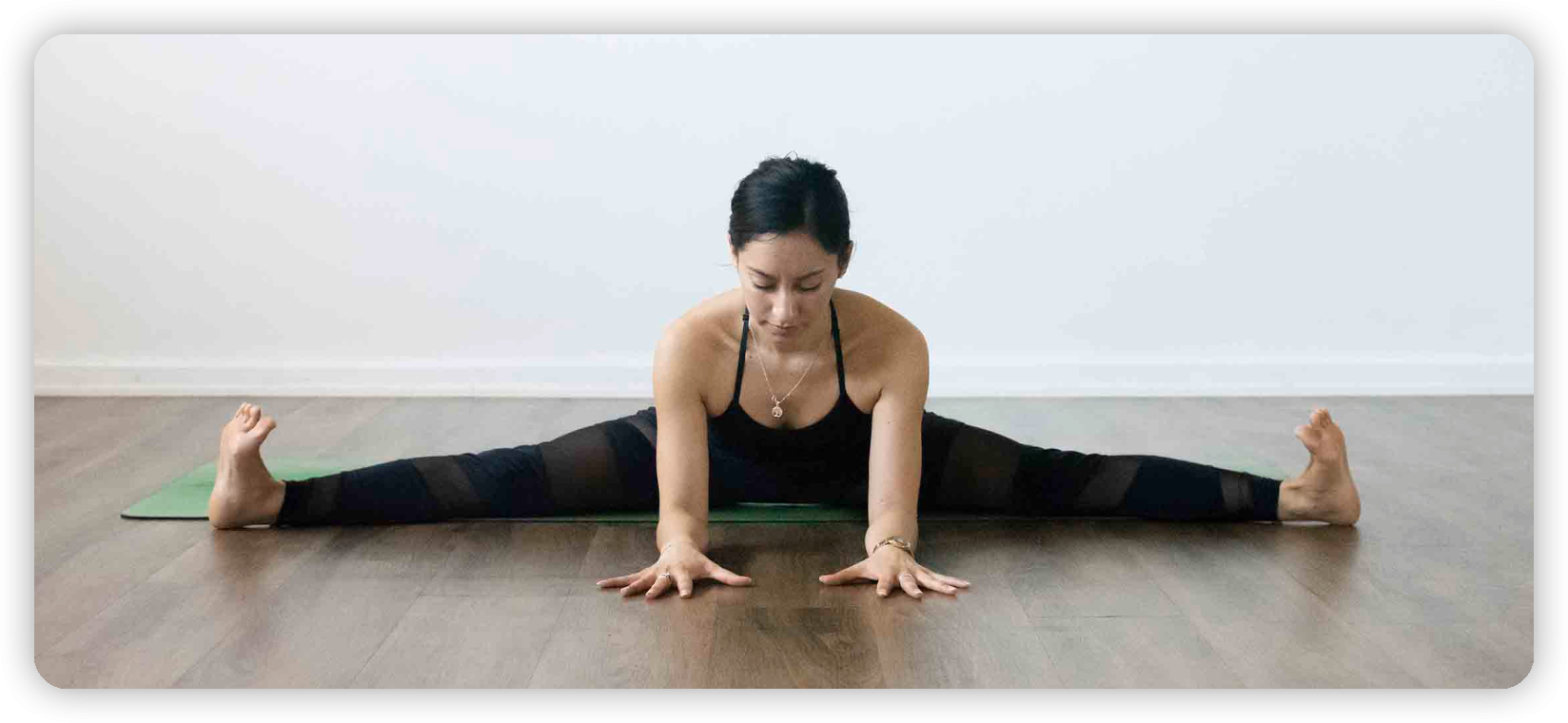The Wide-Angle Seated Forward Bend, known as Upavistha Konasana in Sanskrit, offers a deep stretch for the inner thighs and can also strengthen the spine. Here’s a more organized description:

Benefits:
- Spinal Strength: This pose helps in strengthening the spine while maintaining its natural curvature.
- Leg Stretch: It stretches the backs and insides of your legs, promoting flexibility.
- Stimulates Abdominal Organs: This pose can help stimulate the abdominal organs, aiding in digestion.
- Releases Groin: The pose can be therapeutic for releasing tightness in the groin area.
- Arthritis Relief: Regular practice can potentially help alleviate symptoms of arthritis.
- Detoxification: By stimulating abdominal organs, this pose can aid in detoxifying the kidneys.
Instructions:
- Starting Position: Begin in the Staff Pose (Dandasana). Sit on the ground with your legs stretched out straight in front of you. Flex your ankles, pointing your toes back towards you, keeping your spine erect.
- Leg Position: Lean back slightly, placing hands behind you for support. Open your legs wide apart, aiming for a 90-degree angle or wider if possible.
- Alignment: Rotate your thighs slightly outward, pressing them down into the ground, ensuring your kneecaps face directly upward. Engage the feet, pressing through the balls while keeping them flexed.
- Forward Bend: Hinge forward from your hips, not your waist. Extend your arms forward between your legs, reaching as far as comfortably possible. Maintain the length of your spine, avoiding rounding the back.
- Breathing: With every exhale, see if you can deepen the forward bend slightly, always ensuring you’re moving from the hips and keeping the spine long.
- Duration: Hold the pose for at least 60 seconds or longer if comfortable.
- Release: Inhale, lifting the torso and returning to the starting position.
Modifications and Cautions:
- Lower Back Injury: For those with a lower back injury, elevating the hips by sitting on a folded blanket or cushion can provide relief and maintain alignment. The emphasis should be on keeping the torso upright and lengthening the spine.
- Knee Bend for Beginners: If the stretch is too intense, beginners can slightly bend the knees until flexibility increases.
As with all yoga poses, it’s essential to listen to your body. Only move into stretches as far as you’re comfortable, and ensure you’re not pushing yourself to the point of pain. Consulting with a qualified yoga instructor can provide guidance tailored to your individual needs.

